This week we focused on ISTE standard 5 which states, Students understand human, cultural, and societal issues related to technology and practice legal and ethical behavior.” To me this standard is saying that as a citizen students are able to understand cultural norms of technology as well as are able to use it appropriately while being aware of the dangers and errors that can be made. While working to understand this standard I identified with section A of this standard that states, “Advocate and practice safe, legal, and responsible use of information and technology.” I think that it is important for students to abide by this part of the standard because of the dangers that a student can fall into while searching the web. It is also important that as a teacher to put precedence on this because as their teacher you are going to be put under a magnify glass if your student falls into trouble under your supervision.
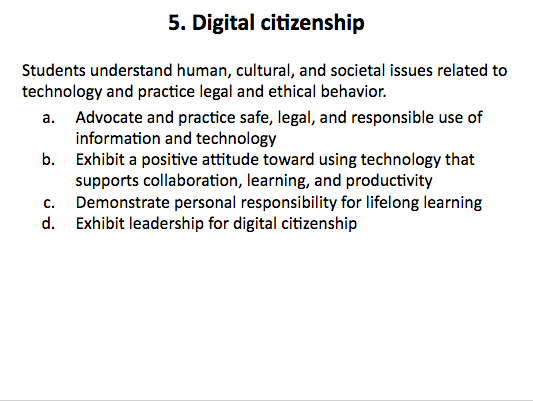
In hopes to teach my students this standard, this week I wanted to know how to teach my student’s about the correct use of technology as well as look to see if there were resources to teach it! I began my search by reading mandatory class readings to help point me in a direction to find a beneficial resource for my question. I read an article that talked about what digital citizenship was. This article helps unpack standard 5 because it gives examples of what it looks like to practice legal and ethical behavior as well as define all of the different parts of interaction with technology. I liked how this resource gave a definition of what they thought digital citizenship was. I also liked how it gave all of the different parts of citizenships with examples of each.
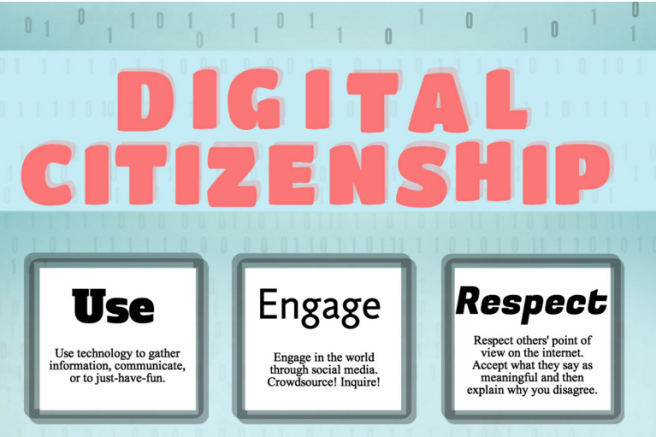
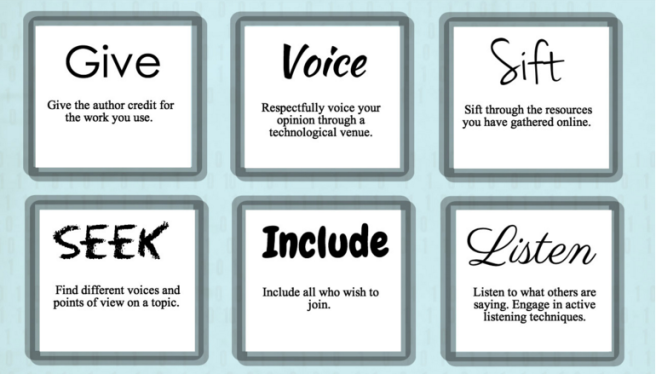
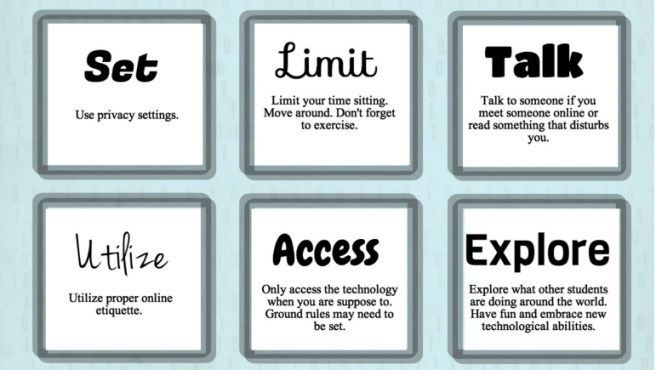
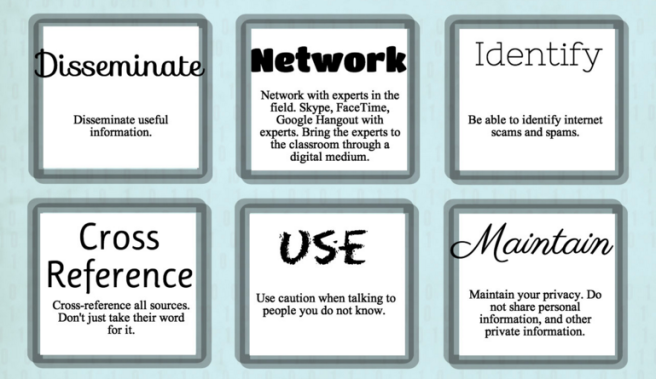
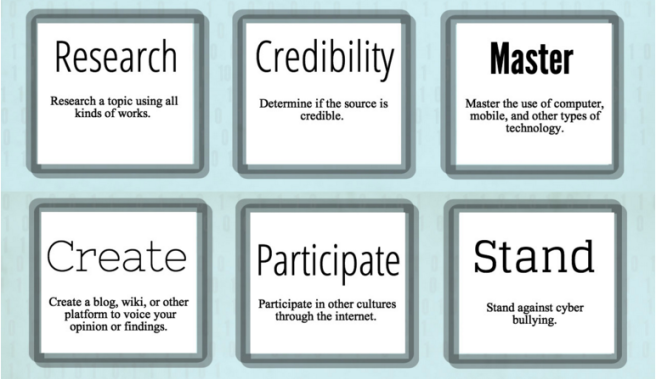
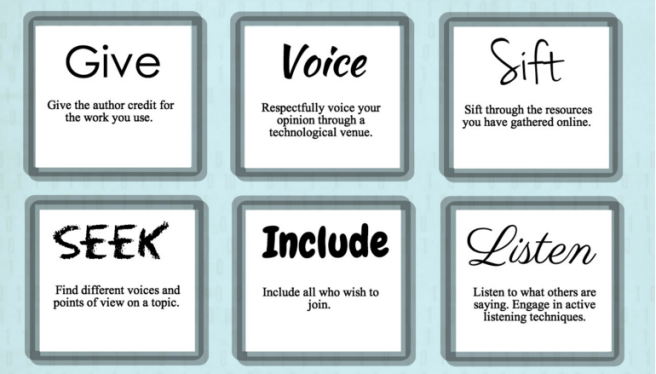
I think that the chart that they use for this would be something beneficial to show to students to spark conversation about what is appropriate and safe while searching the Internet. This article lead me to a different blog post on the same site about BYOT to school policies and what was appropriate. This article talked about implementing a “bring your own technology” programs and the rules that went with them. Although I wasn’t really interested in a complete BYOT programs I did like the guidelines that were created for technology by the students. This spurred my idea of as a class creating our own technology rules as a class after learning about the dangers and benefits of the world wide web.
I believe that after learning what standard 5 looks like through making commutative class rules, as well as discussing the chart seen above students will be able to show their understanding through a resource that I found called netsmartz.
http://www.netsmartz.org/StudentKit
Netsmartz is a teacher and student project kit that lets students teach other students about how to act responsibly while using technology and how to be responsible with the information that it gives you! I believe that this would help me as a teacher make sure students understand what it means to be technologically safe as well as gives me an idea on how to continue to teach upon standard 5! I think this would be an excellent resource to show competence of standard 5 and answered my question of the week about guidance materials!
Course Articles:
TeachThought (Accessed 2016). The definition of digital citizenship. http://teachthought.com/the-future-of-learning/digital-citizenship-the-future-of-learning/the-definition-of-digital-citzenship/
Supporting Article:
TeachThought (Accessed 2016). 11 Sample Education BYOT Policies To Help You Create Your Own. http://www.teachthought.com/uncategorized/11-sample-education-byot-policies-to-help-you-create-your-own/
Resource: Netsmartz
